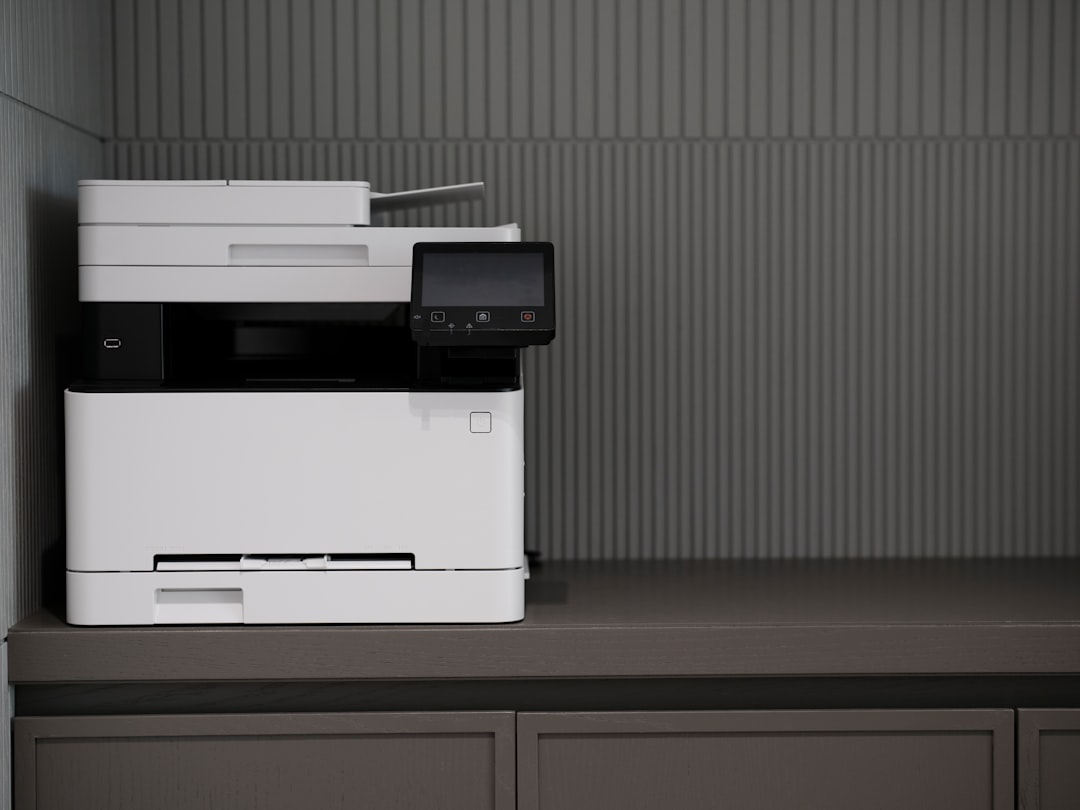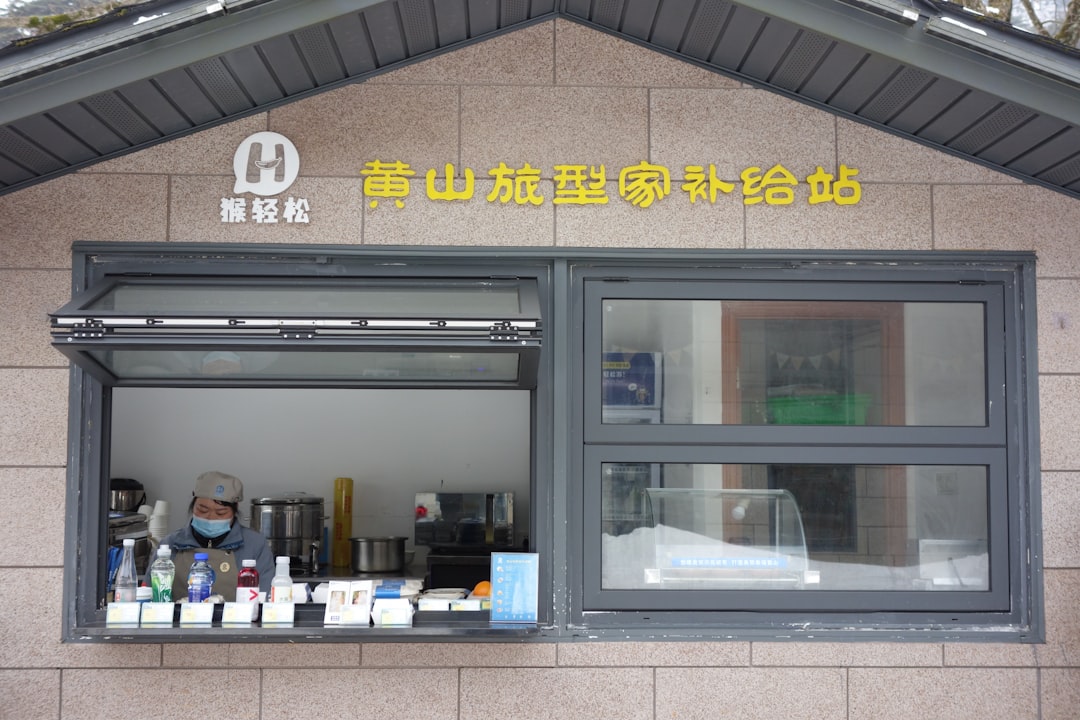

Engage prospects with a scan and streamline customer engagement with FREE QR code marketing tools by Sona – no strings attached!
Create a Free QR CodeFree consultation

No commitment

Engage prospects with a scan and streamline customer engagement with FREE QR code marketing tools by Sona – no strings attached!
Create a Free QR CodeFree consultation

No commitment
In today’s digitally driven marketplace, printing services are no longer confined to traditional roles; they now serve as powerful bridges connecting physical marketing materials with dynamic digital content. However, this evolution comes with new challenges: many businesses struggle to track the real impact of their print campaigns, often missing out on high-value prospects who interact with print but never make it into digital tracking systems. QR code marketing revitalizes classic print media and transforms it into a trackable, actionable asset that drives real-time customer engagement, reducing the risk of lost opportunities and untracked leads.
Modern printing services have embraced this evolution, integrating QR code solutions into everything from business cards and brochures to billboards and packaging. For marketers and decision-makers, this means every handout, mailer, or sign can become a conversion-ready touchpoint, connecting prospects instantly to digital offers, forms, and content without the need for app downloads or complicated workflows. Yet, without proper visibility into who actually engages with these materials, valuable prospects can remain anonymous and customer journeys stall at the very first step.
By leveraging QR codes within high-quality, customized, and even eco-friendly print materials, printing services offer scalable strategies for improving campaign ROI, tracking performance, and gaining deeper customer insights. As more companies look to bridge their offline and online data, QR-driven approaches make it possible to identify, retarget, and nurture audiences who once would have been lost in the shuffle. Explore how these innovations drive results and how your team can implement them to supercharge lead generation and customer acquisition.

QR codes are the modern marketer’s solution for bridging print and digital, enabling a seamless physical-to-digital customer journey. They reduce guesswork by turning every printed piece into a measurable touchpoint and they replace analog bottlenecks with fast, mobile-first actions that customers can complete in seconds. For print providers, this means higher perceived value, stronger client outcomes, and campaigns that are easier to justify and scale.
Outdated workflows like paper sign-up sheets, tear-off response cards, or manually typed URLs often lead to drop-offs and lost intent. With QR-enabled print, scanners land on prefilled forms, one-click booking calendars, and personalized offers. Printers can package these experiences with dynamic QR codes and branded landing pages, then track performance across channels. Yes, Sona QR is built to support every step of this transformation, from design and generation to analytics and attribution.
By aligning QR deployment with campaign goals, printers and marketers can move beyond impression-based success and build systems that capture, qualify, and convert. The result is a measurable, repeatable playbook that lifts conversion rates and justifies investment in premium print experiences.

Print excels at reach and impact, but historically it struggled with timely measurement and proof of ROI. QR codes solve that gap by turning “see and consider” moments into “scan and act” moments. When used with appointment cards, ads, packaging, and signage, QR codes help you connect in seconds and gather the data needed to guide next steps.
For printing services, this is a strategic unlock. You are no longer producing assets that end their value at the moment of distribution. You are delivering ready-made conversion surfaces that capture intent and transmit it directly to marketing and sales systems. The result is better campaign accountability, stronger client relationships, and smarter creative decisions.
The benefits extend across common materials in the industry. Appointment cards can route to calendar scheduling. Window clings can push passersby to an offer or AR demo. Direct mail can tie every household’s scan to a unique landing page. With these capabilities, printing services become essential partners in a client’s growth strategy.

Printing services support a range of QR formats tailored to the goals of each campaign. Selecting the right format ensures smoother user experiences and better data. For most marketing use cases, dynamic QR codes are preferred because they allow edits after printing and unlock analytics. Static codes still have a place for evergreen links, but their lack of measurement limits optimization.
In printing services, the most common and useful formats are link-based destinations for landing pages and forms, vCards for business cards and in-person networking, and SMS or email triggers for fast customer service or appointments. For events or showrooms, Wi-Fi and app download codes remove friction and set the stage for deeper engagement.
With Sona QR, you can generate and manage all of these formats in one place, switch destinations dynamically as campaigns evolve, and keep your team aligned on performance without back-and-forth reprints.

QR-enabled print thrives in moments where people already interact with physical materials. By placing codes where intent is naturally high, you can shorten the distance between curiosity and conversion. The key is to match placement, message, and destination to the context in which scanning occurs.
Printing services are uniquely positioned to consult on placement strategy, improve creative direction, and validate choices with analytics. When each asset uses a unique QR code tied to a specific environment, you gain the insight needed to double down on what works.
In each case, data from scans fuels future strategy. Location, timing, and creative variations reveal what captures attention and which audiences are converting. That feedback loop turns print into a continuous growth engine.
Many organizations discover too late that print drove interest but not conversion. QR codes help you capture intent at the moment it appears, then move scanners into a guided path. The following use cases are common, repeatable, and effective across a wide range of printing clients.
Start by mapping each print asset to a single, outcome-driven QR destination. Avoid linking to generic homepages. Instead, use specific landing pages, booking forms, or dynamic content that matches the promise you make on the printed piece.
Each scenario converts anonymous interest into known engagement. By tracking who scans and what they do next, you can segment by behavior and orchestrate relevant follow-ups that close the loop between print impact and revenue.
Every scan is a signal. It communicates interest level, context, and timing. By deploying distinct QR codes across your print ecosystem, you can turn these signals into structured audiences that power retargeting and nurture campaigns across email, SMS, and paid media. For deeper tactics, see Sona’s playbook Intent-Driven Retargeting.
The objective is to align QR codes with buyer stages and use cases, then let the data populate your CRM and ad platforms for automated follow-up. With Sona QR, each code can carry tags that indicate source, placement, and intent, which makes building audience segments fast and reliable.
Printing services that guide clients through this segmentation strategy elevate their role from vendor to growth partner. You create a system that identifies high-value prospects in the real world and keeps them moving through the funnel.
QR codes are more than convenient links. They are connectors that bring your offline presence into your digital ecosystem. When you align print with social, search, email, and events, QR codes fill a historic measurement gap and create a richer dataset for optimization.
In printing services, integration means planning where QR codes appear and how those scans flow into your marketing stack. Sona QR centralizes your code management and performance tracking, making it easier to test creative variations, share insights with stakeholders, and standardize on what works.
QR codes serve as the offline onramp to your digital engine. With a centralized platform like Sona QR, you can monitor performance across channels and sync scan data with your CRM and ad platforms to keep campaigns coordinated and measurable.
A disciplined approach prevents untracked engagement, missed handoffs, and broken attribution. The following steps help you plan, deploy, and optimize QR-enabled print campaigns that convert. Use them as an internal runbook for creative, operations, and revenue teams.
Treat each step as iterative rather than linear. The goal is to launch quickly, measure early, and improve continuously. When powered by dynamic QR codes and a system like Sona QR, you can adjust without reprinting and preserve your investment as campaigns evolve.
Define a focused goal that aligns with business outcomes. Examples include appointment booking, demo requests, event check-ins, coupon redemptions, post-purchase registrations, or customer feedback. Anchoring your print concept to a single action improves clarity and conversion.
Select dynamic QR codes for most campaigns. They support analytics, retargeting, and destination edits after printing. Static QR codes are suitable for permanent resources like a company profile PDF or evergreen product manuals.
Design with scannability and clarity in mind. Codes should be large enough for the viewing distance, contrasted against a clean background, and accompanied by a direct benefit-focused call to action.
Place codes where they naturally align with context and intent. Prioritize placements that capture attention during decision moments and that your team can measure distinctly.
Treat each scan as a revenue signal. Use analytics to understand performance, then iterate on creative, placement, and destinations before competitors capture the lead.
This structured approach turns print into a living channel that learns and improves. By capturing data at every stage, you protect your investment, accelerate outcomes, and demonstrate clear attribution to leadership.
A central frustration in print has been the gap between distribution and outcome. Knowing that someone saw your poster is not enough. You need to know who scanned, what they did next, and how that engagement shaped pipeline and revenue. Today’s QR analytics close the loop and make print as accountable as digital.
With Sona QR and Sona.com, you can move from scan tracking to true revenue attribution. This includes identity resolution, multi-touch measurement, and journey analytics that connect dots across print, web, ads, and CRM systems.
When you connect scans to revenue, QR codes move from clever gimmick to performance lever. This clarity improves budget allocation, motivates teams, and validates the ongoing role of print in a digital-first plan.
Consistent performance comes from using QR codes with intention, measuring rigorously, and closing the loop with automation. The most successful print-led campaigns treat every scan as the start of a conversation, not the end of an interaction.
Choose the practices that best match your physical media mix, your buyers’ decision cycles, and your marketing stack. For many printing services clients, the combination of unique codes, UTM tagging, and automated follow-ups delivers fast wins that compound over time.
Creative deployments keep momentum going. For example, include QR codes on invoices for reorders, on loyalty cards for coffee shop point balance checks, or on equipment labels for maintenance requests. These placements make QR codes part of everyday workflows that drive measurable value.

Print ROI improves dramatically when QR codes make action immediate and measurable. The following scenarios illustrate how teams translate scans into outcomes and insights. They also show how a small change in placement or messaging can elevate performance without significant added cost.
Use these examples as starting points. The best results come from adapting to your audience, testing variations, and building a simple system for learning and iteration.
Real-world results confirm that when you close the gap between physical engagement and digital data, creativity flourishes and business performance follows. Printing services that bring campaign analytics to the table win larger scopes and longer client relationships.
Even well-designed print can underperform if the QR experience is unclear or the follow-up is inconsistent. Many teams repeat mistakes like using generic codes, overloading assets with multiple CTAs, or neglecting scan analytics. Avoid these pitfalls and set standards that improve outcomes across the board.
Conduct regular audits of QR size, placement, contrast, and CTA language. Combine that with monthly performance reviews to catch opportunities early. These habits make your QR-enabled print resilient and ready for scale.
QR codes have fundamentally elevated the role of printing services from passive information carriers to strategic conversion engines. By tackling pervasive pain points like anonymous engagement, lost prospects, and weak attribution, printing professionals are now empowered to offer trackable, measurable print-to-digital experiences that drive real business outcomes.
Printing services that deploy QR codes not only differentiate their offerings with interactive capabilities but also deliver tangible ROI, deeper customer insights, and a scalable path toward omnichannel brand engagement. Instant engagement, seamless digital access, and actionable tracking turn every print asset into a true revenue driver, closing the gaps that have long impacted print marketing effectiveness.
Forward-thinking leaders who embrace these innovations stand to capture more demand and translate every physical touchpoint into a strategic lever for growth, retention, and meaningful customer connection. If you are ready to put these ideas into practice, Start creating QR codes for free, connect scans to your CRM, and use Sona to attribute revenue across the entire journey.
QR codes have revolutionized the printing services industry by transforming traditional print materials into interactive, data-driven marketing tools. Whether it’s attracting new customers, enhancing client engagement, or tracking campaign performance, QR codes enable printers and marketers to deliver measurable results while enriching the customer experience. Imagine knowing exactly which printed pieces generate the most leads and being able to adjust your strategy instantly—without the cost or delay of reprints.
With Sona QR, you gain the power to create dynamic, trackable QR codes that can be updated in real time, connect every scan directly to revenue, and provide actionable insights that drive smarter marketing decisions. Say goodbye to guesswork and hello to campaigns that continuously evolve based on real customer behavior.
Start for free with Sona QR today and unlock the full potential of your print campaigns—turning every scan into a conversion and every printed asset into a growth opportunity.
QR codes can be added to brochures, business cards, flyers, direct mail, packaging, signage, and event materials to link scanners to landing pages, forms, videos, bookings, or other digital content without requiring app downloads.
QR codes transform static print into interactive, trackable touchpoints that improve customer engagement, enable real-time data capture, increase conversion rates, allow dynamic content updates, and provide measurable ROI for print campaigns.
Modern printing services offer QR code solutions integrated with platforms like Sona QR, which support design, dynamic code generation, analytics, attribution, and centralized campaign management to track performance across print materials.
QR codes reduce friction by enabling instant mobile actions such as booking appointments, accessing offers, viewing product demos, or completing forms, thereby turning passive print impressions into active, measurable engagements.
Creative uses include linking product catalogs to augmented reality demos, routing appointment cards to scheduling pages, using QR codes on eco-friendly print promotions for digital receipts and recycling info, and enabling Wi-Fi access or app downloads at events.
Use Sona QR's trackable codes to improve customer acquisition and engagement today.
Create Your FREE Trackable QR Code in SecondsJoin results-focused teams combining Sona Platform automation with advanced Google Ads strategies to scale lead generation

Connect your existing CRM

Free Account Enrichment

No setup fees
No commitment required

Free consultation

Get a custom Google Ads roadmap for your business






Launch campaigns that generate qualified leads in 30 days or less.
